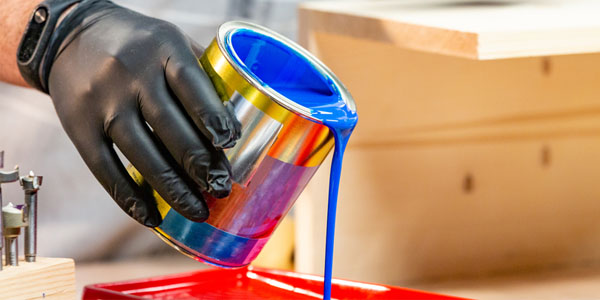Amounting to nearly USD 33 billion, the global synthetic latex polymers market is shaped by diverse regional characteristics, according to Synthetic Latex Polymers: Global Business Analysis and Opportunities program.
Europe and CIS together account for a total 20.4% of the global synthetic latex polymers market in 2017. Although the consumption of synthetic latex polymers in CIS is significantly lower than in Europe, the CIS region offers higher growth potential. Import substitution programs implemented by the Russian government, along with the focus of other CIS countries to develop manufacturing capabilities, will offer various business opportunities for synthetic latex polymer suppliers through 2022.
The supplier landscape of synthetic latex polymers in both regions is highly fragmented. In Europe, the leading synthetic latex polymers suppliers are Synthomer, BASF, Celanese, and Wacker, accounting for 53% of the overall market by volume.
In CIS, the four largest suppliers—BASF, Dow Chemical, Wacker, and Akrilan—account for 35% of the overall market by volume. The CIS supplier landscape is characterized by increasing competition from local suppliers of styrene acrylics. Since 2014, the Russian market of styrene-acrylics has witnessed various expansion projects, as well as the announcement of new capacities for production of acrylic copolymers through 2022. Hence, the share of local producers of synthetic latex polymers is expected to increase versus the share of multinational suppliers over the next five years.
The choice and consumption of polymer types is highly dependent on the regional market characteristics, such as industrial capabilities, price-sensitivity, and role of regulations, among other factors. In the CIS region, styrene acrylics lead by a large amount in terms of volume and value, which is explained by this chemistry’s wide application variety, local availability, and competitive pricing in Russia.
In Europe, carboxylated styrene-butadiene (X-SB) remains the leading synthetic latex polymer in volume terms, and pure acrylics represent the largest chemistry in terms of value. Because of the strengthening regulations on VOC emissions, VAE is expected to be the fastest growing polymer in Europe through 2022, benefiting from its environment-friendly profile, competitive pricing, and favorable application mix.
After a decade of decline, the consumption of synthetic latex polymers in paper applications in Europe has started to grow again. This can be explained by the rising consumerism and increase in online orders, which in turn drive the demand for paper board. The growth in consumption of synthetic latex polymers in paper packaging is also observed in CIS due to the fall in paperboard imports and increase of local production.
In both regions, paints and coatings applications is the leading consumer of synthetic latex polymers by volume and value. In CIS, paints and coatings has been by far the most dominant end-use application in 2017, accounting for around 31% of the total consumption.
The consumption of different types of synthetic latex polymers varies widely between the countries, notably due to the contrasting application split, which is portrayed in Kline’s detailed database.
In Europe, Germany is the largest consumer of synthetic latex polymers due to its large and advanced industries of paints and coatings, paper, adhesives and sealants, and construction. In Germany, the demand for synthetic latex polymers is also driven by its large automotive industry, which is one of the major consumers of coatings, adhesives, nonwoven and textile. In CIS, Russia accounts for a dominating 70% share of the demand for synthetic latex polymers, due to the country’s strongest industrial development, with establishment of large manufacturing industries, compared to the rest of CIS countries.
Different variables will be influencing the growth of leading synthetic latex polymers in Europe and CIS. The European market is mature, and the consumption growth will be mainly driven by the development of environment-friendly and high-performance materials, such as in the construction and automotive industries. The strong growth in consumption of synthetic latex polymers in CIS will be supported by the recovering economy and rise of manufacturing industries with government-supported import substitution programs.

